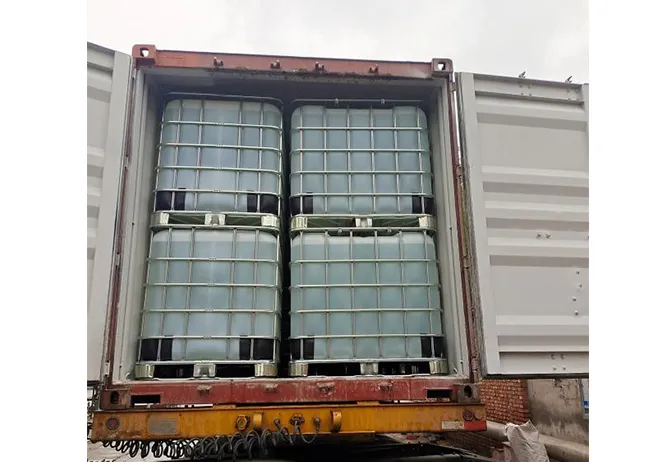
Elevating Your Experience with E450 The Next Generation of Raising Agents
The Essential Role of Raising Agents in Baking A Focus on E450
Baking is both an art and a science, and one of the key components that can make or break a baking recipe is the raising agent. Among the myriad of raising agents available, E450, or diphosphates, stands out due to its unique properties and effectiveness. Understanding the function and importance of E450 can enhance baking results, making it a favored choice for both home bakers and professional chefs.
What is E450?
E450, classified as a food additive, specifically falls under the category of raising agents. It is a group of chemical compounds that includes various diphosphates, which serve to create chemical reactions that produce carbon dioxide gas. This gas is what gives baked goods their light and airy structure. E450 is widely used in products such as cakes, pastries, and breads, often in combination with other raising agents like baking soda or yeast.
How E450 Works
When E450 is introduced into a batter or dough, it interacts with moisture and heat to release carbon dioxide. This reaction begins as soon as the ingredients are mixed and intensifies during baking. The expanding gas bubbles form a network that causes the mixture to rise, resulting in the desired texture. This mechanism is particularly beneficial in recipes where a consistent rise is crucial, such as in fluffy cakes or bread with a soft crumb.
Benefits of Using E450
One of the most significant advantages of using E450 is its ability to provide a reliable rise without the need for lengthy fermentation times, as seen with yeast. This makes it especially valuable in commercial baking, where time is often of the essence. Moreover, E450 is known for its neutral flavor, which allows it to blend seamlessly into a variety of baked goods without altering the taste.
raising agent e450

E450 also contributes to the overall quality of baked products. It helps improve the dough's stability and can enhance moisture retention, leading to a more appealing texture. Additionally, baked goods made with E450 often have a better shelf life, as the structure remains intact for longer periods, reducing the risk of staleness.
Considerations and Safety
While E450 is generally recognized as safe by food safety authorities, it is essential for both bakers and consumers to be aware of potential sensitivities. Some individuals may experience allergic reactions or gastrointestinal discomfort from consuming food products containing certain additives, including E450. Therefore, it is advisable to read labels carefully and be informed about the ingredients used in commercial products.
The Future of E450 in Baking
As the baking landscape continues to evolve with a growing emphasis on health and wellness, the role of additives like E450 is likely to come under scrutiny. The trend towards natural ingredients has led some bakers to seek alternatives, such as baking powder that does not contain synthetic additives. However, E450 may still feature prominently in recipes where consistency and reliable performance are paramount.
Innovations in food science may also pave the way for improved versions of E450 with enhanced functionality or added benefits, such as nutritional value. As bakers strive to meet the demands of health-conscious consumers, the focus on how additives like E450 can be used responsibly and effectively will remain crucial.
Conclusion
E450 is a powerhouse among raising agents that has greatly contributed to the baking industry. Its ability to provide quick and reliable results makes it indispensable for bakers seeking to achieve perfect textures and consistent performance. As we continue to navigate the complex world of baking ingredients, a thorough understanding of E450 will empower bakers to make informed choices that align with their culinary goals. Whether in a cozy home kitchen or a bustling bakery, E450 remains an ally in the quest for baking excellence.
-
Buy High-Quality Trichloroisocyanuric Acid for Sale | TCCA 90% SupplierNewsAug.30,2025
-
Pure Sodium Dichloroisocyanurate Dihydrate | Powerful DisinfectantNewsAug.29,2025
-
Industrial Chemicals: Quality & Purity for Every IndustryNewsAug.28,2025
-
Nitrile Rubber Honoring Strict Production StandardsNewsAug.22,2025
-
Aspartame Ingredients Honoring Food Safety ValuesNewsAug.22,2025
-
Fertilizer for Balanced Plant NutritionNewsAug.22,2025
-
Cyanide Gold Processing with High Purity AdditivesNewsAug.22,2025
Hebei Tenger Chemical Technology Co., Ltd. focuses on the chemical industry and is committed to the export service of chemical raw materials.
-

view more DiethanolisopropanolamineIn the ever-growing field of chemical solutions, diethanolisopropanolamine (DEIPA) stands out as a versatile and important compound. Due to its unique chemical structure and properties, DEIPA is of interest to various industries including construction, personal care, and agriculture. -

view more TriisopropanolamineTriisopropanolamine (TIPA) alkanol amine substance, is a kind of alcohol amine compound with amino and alcohol hydroxyl, and because of its molecules contains both amino and hydroxyl. -

view more Tetramethyl Thiuram DisulfideTetramethyl thiuram disulfide, also known as TMTD, is a white to light-yellow powder with a distinct sulfur-like odor. It is soluble in organic solvents such as benzene, acetone, and ethyl acetate, making it highly versatile for use in different formulations. TMTD is known for its excellent vulcanization acceleration properties, which makes it a key ingredient in the production of rubber products. Additionally, it acts as an effective fungicide and bactericide, making it valuable in agricultural applications. Its high purity and stability ensure consistent performance, making it a preferred choice for manufacturers across various industries.





